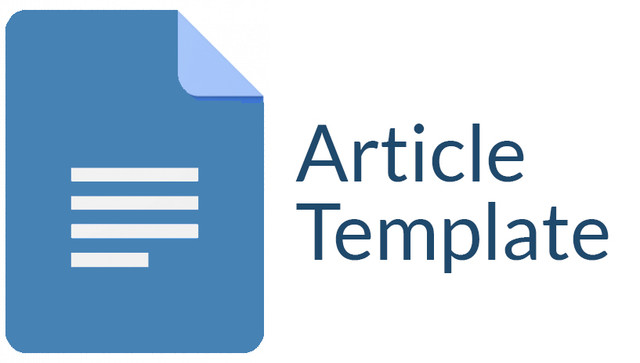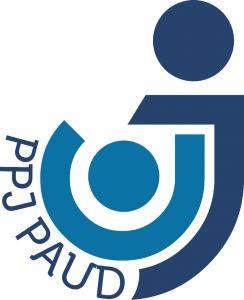Exploration of Natural Learning Materials to Enhance Artistic Creativity in Children Aged 5-6
DOI:
https://doi.org/10.30736/jce.v9i1.2533Keywords:
explorative learning, natural learning materials, artistic creativity, children aged 5-6Abstract
This study investigated the effectiveness of exploring natural materials as media to enhance artistic creativity in 5-6-year-old children at TK Pembangunan Glagah Lamongan. A pre-experimental quantitative approach with a one-group pre-test post-test design was employed. The study's subjects comprised 13 students from Group B at TK Pembangunan Glagah Lamongan, selected using a saturated sampling technique. Primary data were collected through a validated and reliable observation instrument, while secondary data were obtained via field observations and interviews conducted throughout the study. Data analysis was performed using the Wilcoxon Signed-Rank Test to determine significant differences between pre-test and post-test scores of children's artistic creativity, with a significance level of 0.05. The Wilcoxon Signed-Rank Test results, with a p-value of 0.002, indicate that the use of natural materials as media significantly improved artistic creativity in 5-6-year-old children at TK Pembangunan Glagah Lamongan. This intervention successfully enhanced creativity in most students without diminishing it in others.
References
Aisyiah, N. A., & Pamungkas, J. (2023). Pemanfaatan Bahan Alam Lingkungan sebagai Media Pembelajaran Seni Rupa Anak Usia Dini. Jurnal Obsesi : Jurnal Pendidikan Anak Usia Dini, 7(6), 6741–6749. https://doi.org/https://doi.org/10.31004/obsesi.v7i6.4606
Arini, I., & Fajarwati, A. (2020). Media Bahan Alam Untuk Mengembangkan Kemampuan Klasifikasi Pada Anak Usia Dini. Visi: Jurnal Ilmiah Pendidik Dan Tenaga Kependidikan Pendidikan Non Formal, 15(2), 117–126. https://doi.org/https://doi.org/10.21009/JIV.1502.3
Dali, F. A., Kaharu, A., & Husain, R. (2025). Meta-Analysis of Challenges and Solutions in Early Childhood Education in Indonesia. International Journal of Scientific Research in Science and Technology, 12(1). https://doi.org/https://doi.org/10.32628/IJSRST25121159
Eisner, E. W. (2003). The Arts and the Creation of Mind. Language Arts, 80(5), 340–344. https://acurriculumjourney.wordpress.com/wp-content/uploads/2014/04/eisner-2003-the-arts-and-the-creation-of-mind.pdf
Fitriani, R. (2019). Peran Kegiatan Seni dalam Mengembangkan Kecerdasan Emosional Anak Usia Dini. Jurnal Obsesi: Jurnal Pendidikan Anak Usia Dini, 3(1), 263–270.
Lestari, S. (2018). Pengaruh Stimulasi Seni Terhadap Perkembangan Kognitif Anak Usia Dini. Jurnal Pendidikan Anak Usia Dini, 2(1), 1–10.
Munandar, U. (2012). Pengembangan Kreativitas Anak Berbakat. Rineka Cipta.
Nurhanifah, I. (2019). Pengembangan Kreativitas Seni Anak Usia Dini di Kelompok Bermain Wadas Kelir Purwokerto Selatan skripsi [INSTITUT AGAMA ISLAM NEGERI Purwokerto]. https://repository.uinsaizu.ac.id/5557/1/COVER_BAB IO_ BAB V_DAFTAR PUSTAKA.pdf
Permatasari, S. J., Saputra, E. E., & Sarah, S. (2025). Mengembangkan Imajinasi Anak Usia Dini melalui Kegiatan Melukis dengan Media Alam. Sulawesi Tenggara Educational Journal, 5(1), 442–450.
Piaget, J. (1952). The Origin of Intelligence in the Child. International University Press. https://sites.pitt.edu/~strauss/origins_r.pdf
Pratiwi, D. (2017). Peningkatan Kemampuan Motorik Halus Melalui Kegiatan Kolase pada Anak Usia Dini. Jurnal Pendidikan Anak, 6(2), 112–120.
RMCAD. (2025). Art Education for Early Childhood: Encouraging Creativity from a Young Age. https://www.rmcad.edu/blog/art-education-for-early-childhood-encouraging-creativity-from-a-young-age/
Saefurrohman, N. (2024). The Role of Art Education in Developing Creativity and Expression in Early Childhood. Journal of Pedagogy: Journal of Education, 1(3), 95–102. https://doi.org/http://dx.doi.org/10.62872/2rh6hp60
Sharim, M. A. Bin, Roseli, N. E. B. N., Yasin, S. F. B. M., & Kuen, J. H. C. (2024). Socioeconomic Barriers to Parental Involvement in Art Education. International Journal of Academic Research in Business and Social Sciences, 14(11), 2883–2898. https://doi.org/10.6007/IJARBSS/v14-i11/23428
Sinaga, D. A., Anggraini, E. S., Adriani, K. D., Nababan, L. E., & Sinaga, L. (2024). Tantangan Dalam Pengembangan Kreativitas Anak Usia Dini di TK Masjid Nurul Muslimin. Madani Jurnal Ilmiah Multidisiplin, 2(9), 593–598. https://doi.org/https://doi.org/10.5281/zenodo.13894445
Suryadi, A. (2016). Pengembangan Kreativitas Anak Usia Dini Melalui Kegiatan Bermain Seni. Jurnal Pendidikan Anak Usia Dini, 1(1), 1–10.
Tang, Q., & Balinas, J. M. (2024). Exploring the Influence of Parental Support on Students’ Art Education Achievement. Journal of Education and Educational Research, 10(2), 199–204. https://doi.org/https://doi.org/10.54097/xt6fkw58
Vygotsky, L. S. (1978). Mind in Society: Development of Higher Psychological Processes. Harvard University Press.
Widiyawati, & Suryana, D. (2024). Strategi dalam Mengembangkan Kreatifitas Seni Anak Usia Dini. Jurnal Pendidikan Tambusai, 8(2), 20056–20065.
Wilson, R. (2018). Bringing the outdoors in. In Nature and Young Children (3th ed., p. 12). Routledge.
Winner, E., GoldsteinS., T., & Vincent-Lancrin, S. (2013). Art for Art’s Sake?: The Impact of Arts Education. In Educational Research and Innovation. OECD Publishing. https://doi.org/http://dx.doi.org/10.1787/9789264180789-en
Wright, S. (2012). Children, Meaning-Making and the Arts (2nd ed.). Pearson Australia.
Yunita, L., Mayar, F., Suryana, D., & Mahyuddin, N. (2025). The Effect of Utilizing Natural Environmental Resources on The Creativity and Fine Motor Skills of Children Aged 4–5 Years. Journal of Educational Health and Community Psychology, 14(2), 825–833. https://doi.org/10.12928/jehcp.vi.31028
Downloads
Published
How to Cite
Issue
Section
License
Copyright (c) 2025 A'la Rahmatin Nawangsari, Diana Dwi Jayanti, Dina Fitriana; Dinar M. Leksana, Imas Jihansyah

This work is licensed under a Creative Commons Attribution-ShareAlike 4.0 International License.
Please find the rights and licenses in JCE (Journal of Childhood Education). By submitting the article/manuscript of the article, the author(s) agree with this policy. No specific document sign-off is required.
1. License
Use of articles will be governed by the Creative Commons Attribution - ShareAlike license as currently displayed on Creative Commons Attribution-ShareAlike 4.0 International License.
2. Author(s)' Warranties
The author warrants that the article is original, written by stated author(s), has not been published before, contains no unlawful statements, does not infringe the rights of others, is subject to copyright that is vested exclusively in the author and free of any third party rights, and that any necessary written permissions to quote from other sources have been obtained by the author(s).
3. User Rights
JCE (Journal of Childhood Education)'s spirit is to disseminate articles published are as free as possible but there is a little payment for publication. Under the Creative Commons license, JCE (Journal of Childhood Education) permits users to copy, distribute, display, and perform the work for commercial purposes. Users will also need to attribute authors and JCE (Journal of Childhood Education) on distributing works in the journal and other media of publications.
4. Co-Authorship
If the article was jointly prepared by more than one author, any authors submitting the manuscript warrants that he/she has been authorized by all co-authors to be agreed on this copyright and license notice (agreement) on their behalf, and agrees to inform his/her co-authors of the terms of this policy. JCE (Journal of Childhood Education) will not be held liable for anything that may arise due to the author(s) internal dispute. JCE (Journal of Childhood Education) will only communicate with the corresponding author.
5. Miscellaneous
JCE (Journal of Childhood Education) will publish the article (or have it published) in the journal if the article’s editorial process is successfully completed. JCE (Journal of Childhood Education)'s editors may modify the article to a style of punctuation, spelling, capitalization, referencing and usage that deems appropriate. The author acknowledges that the article may be published so that it will be publicly accessible and such access will be free of charge for the readers as mentioned in point 3.
JCE (Journal of Childhood Education) by Universitas Islam Lamongan is licensed under a Creative Commons Attribution-ShareAlike 4.0 International License.Based on a work at http://journalfai.unisla.ac.id/index.php/jce.













